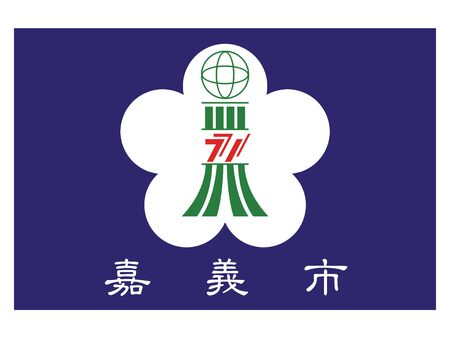Introduction to British Heritage Stones
British heritage stones, with their deep-rooted connections to the country’s landscape and history, occupy a special place in the cultural fabric of the United Kingdom. From the rugged granites of Cornwall to the iconic Portland limestone used in London landmarks, these stones are more than mere building materials; they are enduring symbols of Britain’s geological diversity and architectural legacy. Each type of stone—be it Welsh slate, Cotswold stone, or Scottish granite—carries unique characteristics shaped by millennia of natural processes and centuries of human craftsmanship. Their presence in castles, cathedrals, and historic homes speaks not only to their durability but also to their ability to convey a sense of place and tradition. As modern practices such as Feng Shui gain popularity across Britain, there is a growing interest in integrating these locally significant stones into contemporary wellbeing rituals. This fusion offers an opportunity to honour British heritage while exploring new ways to enhance harmony and energy flow within homes and spaces, setting the stage for a thoughtful exploration of how these remarkable stones can be meaningfully incorporated into Feng Shui crystal practices.
2. Fundamentals of Feng Shui Crystal Practices
Feng Shui, an ancient Chinese discipline, revolves around the art of harmonising individuals with their environment to promote wellbeing and prosperity. Central to this philosophy is the concept of Qi (pronounced “chi”), the vital energy that flows through spaces and influences all aspects of life. Practitioners seek to guide and enhance this energy by making intentional adjustments to their surroundings, thus fostering balance and positive outcomes.
Crystals are significant tools within Feng Shui, valued for their natural ability to interact with and amplify Qi. Each type of crystal is believed to possess distinct energetic properties, which can be harnessed to address specific needs—such as attracting abundance, promoting health, or encouraging tranquillity. The placement and selection of crystals are therefore strategic, intended to correct imbalances or deficiencies in a given space.
Below is a simplified table outlining the traditional roles of commonly used crystals within Feng Shui practice:
| Crystal Type | Traditional Role in Feng Shui | Typical Placement |
|---|---|---|
| Clear Quartz | Amplifies energy and intention; general harmoniser | Centres of rooms or workspaces |
| Rose Quartz | Encourages love and emotional healing | Bedroom or relationship corners (Kun sector) |
| Citrine | Promotes wealth and abundance | Wealth corner (Xun sector) or near entrances |
| Aventurine | Enhances growth and opportunities | East-facing areas; office spaces |
| Amethyst | Calms the mind; fosters spiritual growth | Meditation spaces or study areas |
The interplay between these crystals and the spatial arrangement aims to cultivate environmental harmony—a core tenet of Feng Shui. By adjusting the flow of Qi using purposeful crystal placements, practitioners create supportive atmospheres tailored to personal aspirations and challenges. This foundational approach sets the stage for integrating British heritage stones into traditional practices, marrying local geological treasures with time-honoured Eastern wisdom.

3. Cultural Intersections: Bridging British Tradition and Eastern Philosophy
The integration of British heritage stones into Feng Shui crystal practices represents a fascinating convergence of two distinct cultural legacies. On one hand, British heritage is deeply rooted in geological history, with stones such as Welsh slate, Portland limestone, and Cumbrian green slate symbolising endurance, craftsmanship, and a connection to the land. These materials have shaped the architecture and identity of the United Kingdom for centuries, often associated with stability, tradition, and a sense of place.
On the other hand, Feng Shui is an ancient Chinese philosophy focused on harmonising individuals with their surrounding environment through the mindful placement of objects—particularly natural elements like crystals—to enhance energy flow (Qi) and promote well-being. The practice values the metaphysical properties of stones and their ability to influence health, prosperity, and balance within a space.
Compatibility and Contrasts
At first glance, the rational, historical appreciation for British heritage stones might appear at odds with the metaphysical orientation of Feng Shui. However, both traditions share a reverence for natural materials and recognise their impact on human experience. Where British stonework emphasises durability and physical presence, Feng Shui highlights energetic resonance. This difference creates opportunities for meaningful dialogue between tangible heritage and intangible well-being principles.
Opportunities for Synergy
By integrating British stones into Feng Shui layouts, practitioners can bridge Western material culture with Eastern philosophical approaches to wellness. For instance, placing locally sourced slate or sandstone in key areas of the home may not only honour regional identity but also serve as grounding elements that support positive energy flow according to Feng Shui principles. Such practices allow individuals to celebrate local craftsmanship while cultivating harmony in their living spaces.
Enhancing Well-Being Through Collaboration
This intersection offers a unique opportunity to enrich contemporary well-being practices by combining the symbolic weight of British heritage stones with the intentionality of Feng Shui design. Through careful selection and placement, these culturally significant materials can contribute both aesthetic value and energetic benefit—creating environments that respect tradition while fostering holistic balance.
4. Selecting British Stones for Feng Shui Applications
When integrating British heritage stones into Feng Shui crystal practices, careful selection is essential to ensure both geological suitability and energetic harmony. The United Kingdom is home to a diverse array of native stones, each with unique mineral compositions and historical resonance that can be harnessed within Feng Shui frameworks. This section offers guidance on choosing the most appropriate British stones by examining their intrinsic properties and matching them with corresponding Feng Shui intentions.
Geological Properties and Energetic Attributes
The geological diversity of the UK provides practitioners with various options, from the ancient granites of Cornwall to the emblematic Blue John fluorite of Derbyshire. When selecting a stone, consider its mineral makeup, colour, texture, and traditional uses, as these factors influence both the stone’s vibrational quality and its alignment with Feng Shui elements such as Wood, Fire, Earth, Metal, and Water.
Key British Heritage Stones for Feng Shui Use
| Stone | Region | Geological Features | Energetic Attributes (Feng Shui) |
|---|---|---|---|
| Blue John Fluorite | Derbyshire | Banded purple-blue fluorite; rare and visually striking | Enhances clarity, communication; aligns with Water element for flow and adaptability |
| Cornish Granite | Cornwall | Coarse-grained igneous rock; highly durable | Promotes stability, grounding; supports Earth element in homes seeking balance |
| Welsh Slate | North Wales | Smooth grey slate; fine-grained metamorphic rock | Aids transformation and renewal; integrates Metal element for precision and focus |
| Portland Limestone | Dorset | Pale, fossil-rich limestone; widely used in British architecture | Encourages openness and receptivity; harmonises with Earth and Metal elements in shared spaces |
| Cairngorm Quartz (Smoky Quartz) | Scottish Highlands | Pale to deep brown quartz crystal; translucent luster | Dissipates negative energy; enhances protection and supports Fire element when energising spaces |
Aligning Stone Selection with Feng Shui Goals
To optimise the benefits of these heritage stones within your environment:
- Map Your Bagua: Identify areas in your space that correspond to specific life aspects (wealth, health, relationships) and choose stones whose elemental associations reinforce those zones.
- Sensory Considerations: Select stones not only by appearance but also by tactile qualities—smoothness or roughness can affect how energy flows through a room.
- Cultural Resonance: Embrace stones that connect with local history or personal ancestry to deepen the energetic relationship between environment and intention.
- Permanence vs. Mobility: Decide whether the stone should be a fixed feature (e.g., granite sculpture) or a movable accent (e.g., tumbled Blue John) for flexible energy adjustment.
Summary Guidance for Practitioners
Selecting British heritage stones for Feng Shui applications requires a blend of geological insight and sensitivity to subtle energies. By consciously pairing native stones with intended outcomes—whether grounding stability, protective shielding or enhanced communication—practitioners can create harmonious living spaces that reflect both British tradition and Eastern philosophy.
5. Practical Integration Methods and Placement Strategies
Understanding Spatial Flow in British Interiors
Integrating British heritage stones within Feng Shui practices requires careful consideration of traditional British architecture, which often includes features like bay windows, fireplaces, and period-specific room layouts. Begin by analysing the flow of energy (Qi) through hallways and communal spaces commonly found in Victorian or Georgian homes. Place stones such as Welsh slate or Cotswold limestone near entryways to ground incoming energy, or use Cornish granite as an anchor in living areas where families gather.
Aligning Stones with Feng Shui Bagua Map
Apply the Feng Shui Bagua map over your homes floorplan, aligning British stones with corresponding zones. For instance, position Yorkstone in the south-east corner to enhance wealth and abundance, reflecting its historic association with prosperity in English marketplaces. In workspaces, place Derbyshire Blue John on desks or shelves in the north section to foster career advancement and clarity—a nod to Britain’s industrial heritage.
Respecting Architectural Nuances
British homes often feature thick walls and smaller window openings compared to modern designs. Use lighter-coloured stones like Portland stone on windowsills to amplify natural light, counteracting any heaviness from architectural features. For listed or heritage properties, opt for subtle placements—such as small stone bowls or coasters—to maintain compliance with preservation regulations while still benefiting from their energetic properties.
Incorporating Stones into Everyday Objects
Enhance daily routines by integrating heritage stones into functional décor: consider Yorkshire sandstone bookends for study rooms, or carved Cornish serpentine trays for entryway keys and coins. These subtle incorporations allow you to enjoy both aesthetic value and energetic benefits without disrupting traditional British interiors.
Adapting to Modern British Lifestyles
Modern British living often blends open-plan spaces with period details. Use larger statement pieces—like a polished limestone centrepiece on a kitchen island—to unify old and new elements. For shared workspaces, portable stone objects allow flexibility while maintaining harmony and focus. Regularly cleanse stones using gentle British methods, such as rainwater rinsing or placing them on a windowsill during a typical overcast day, respecting both environmental context and cultural sensibilities.
6. Case Studies and Reflections
Bringing British Stones into Feng Shui: Real-life Experiences
The integration of British heritage stones into Feng Shui crystal practices has seen a number of remarkable real-world applications across the UK. For instance, a London-based interior designer collaborated with a local Feng Shui consultant to incorporate Cotswold limestone and Welsh slate into the design of a new-build home. By positioning these stones in accordance with traditional Bagua mapping, they reported an enhanced sense of stability and groundedness among the inhabitants. The client also noticed improved harmony in family relationships—an outcome attributed both to the calming energy of the locally sourced stone and its cultural resonance.
Corporate Wellness: A Case from Manchester
A Manchester tech start-up sought to foster creativity and reduce stress in their workspace. The company partnered with a practitioner who introduced Derbyshire Blue John as a central feature in their communal area, utilising its reputed metaphysical qualities alongside established Feng Shui principles for career advancement and communication. Over six months, staff surveys reflected increased job satisfaction and a reduction in workplace conflicts, underscoring the potential benefits of combining local stone heritage with Eastern spatial philosophy.
Personal Reflection from a Practitioner
Sophie Ellis, a UK-based Feng Shui consultant, shares her perspective: “Integrating British stones has deepened my practice and my clients’ connection to place. Using Cornish granite or Scottish marble doesn’t just tick the box for aesthetics; it roots the energy work in our own landscape, making the outcomes feel more personal and meaningful.” She notes that clients often report a greater sense of belonging and wellbeing when native materials are used, suggesting that local context amplifies the traditional effects described in classical Feng Shui texts.
Lessons Learnt: Outcomes and Considerations
The common thread across these case studies is that merging British heritage stones with Feng Shui practices not only enhances environmental harmony but also fosters a deeper cultural connection for those involved. Practitioners emphasise the importance of respecting both traditions—honouring the spiritual significance of indigenous materials while adapting classical Feng Shui methods thoughtfully. Challenges include sourcing authentic stones responsibly and ensuring that adaptations do not dilute either tradition’s core values. Nonetheless, these experiences demonstrate that such cross-cultural integrations can yield tangible benefits for wellbeing, spatial energy, and community identity within the UK context.


